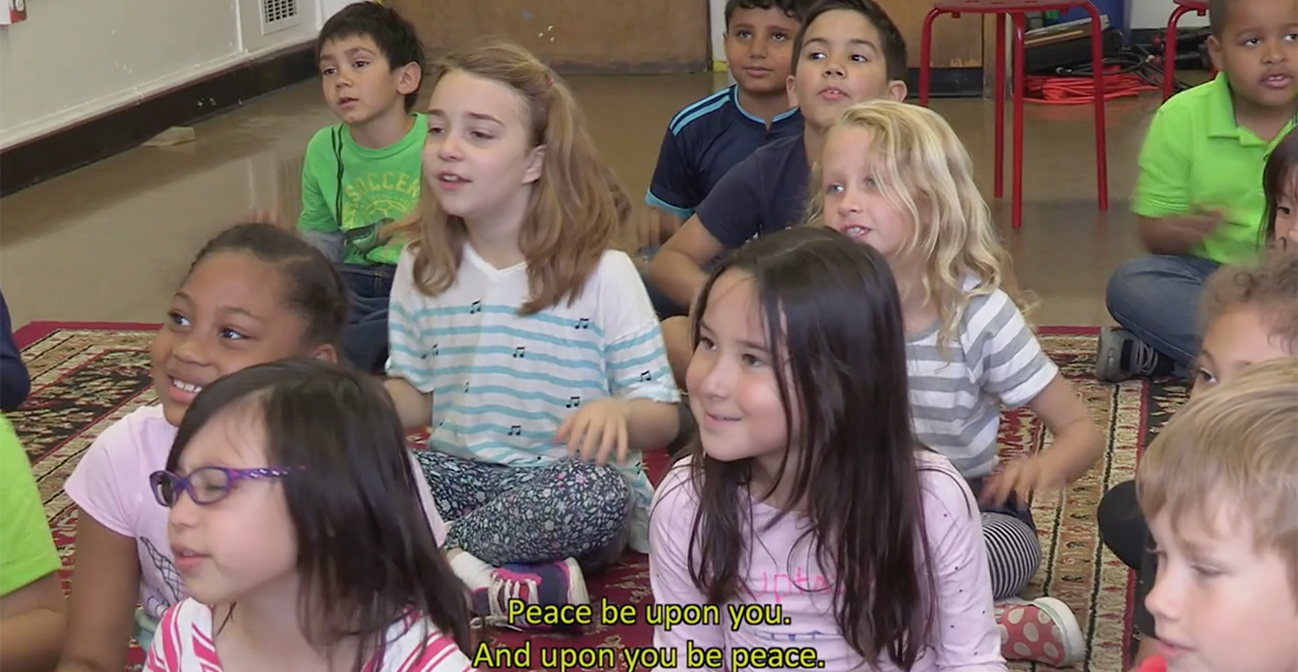Join us for conversations that inspire, recognize, and encourage innovation and best practices in the education profession.
Available on Apple Podcasts, Spotify, Google Podcasts, and more.

CLASSROOM AT A GLANCE
Teacher
Rita Lahoud
Language
Arabic
Grades
2
School
Public School 261 Philip Livingston, Brooklyn, New York
Lesson Date
May 23
Class Size
17
Schedule
50 minutes once a week
اضغط هنا للترجمة باللغة العربية
In this lesson, Miss Lahoud’s second-grade Art and Arabic students develop vocabulary through art, drawing pictures of vegetables they like and don’t like, and presenting these to their classmates. Class begins with a “hello” song and a brief review of the weather and days of the week. After introducing the lesson goals, Miss Lahoud shows students pictures of vegetables and leads the class in naming them aloud. Next, she explains the day’s activity, in which students will draw and color the vegetables they like in one bowl and the vegetables they don’t like in another. After students finish their work, they discuss what they drew in their bowls in pairs, and then present their drawings to the rest of the class.
Communication: Interpersonal, Presentational
Connections: Making Connections
Foreign Language in the Elementary School (FLES)
This elementary school model organizes instruction around a scope and sequence taught by a qualified foreign language teacher. Its goals include developing language proficiency with an emphasis on oral skills, as well as providing a gradual introduction to literacy, building cultural knowledge, and tying language learning to the content of the early grades’ curriculum. FLES programs vary, especially in the number of meetings per week or minutes per session. See also Foreign Language Exploratory Program (FLEX).
thematic units
Thematic units are designed using content as the organizing principle. Vocabulary, structures, and cultural information are included as they relate to the themes in each unit. For an excellent example of theme-based units, see the Nebraska Foreign Language Education Web site in General Resources.
As you reflect on these questions, write down your responses or discuss them as a group.
Watch other videos in the Teaching Foreign Languages K–12 library for more examples of teaching methodologies like those you’ve just seen. Note: All videos in this series are subtitled in English.
Try these ideas in your classroom. Where it’s not already evident, reflect on how to adapt an idea that targets one performance range for application to other performance ranges.
World-Readiness Standards for Learning Languages
The World-Readiness Standards for Learning Languages create a roadmap to guide learners to develop competence to communicate effectively and interact with cultural understanding. This lesson correlates to the following Standards:
Interpersonal Communication
Presentational Communication
Making Connections
Lesson Materials
اضغط هنا للترجمة باللغة العربية
Opening Lesson Routine (PDF)
A description of the 10–15-minute routine that Miss Lahoud uses to begin each class
Song Lyrics (PDF)
Lyrics to the three songs that Miss Lahoud uses in her opening routine
Vegetable Bowl Student Worksheet (PDF)
A worksheet used to accompany the art activity in which students draw vegetables they like and don’t like in side-by-side bowls
Curriculum References
For language goals:
ACTFL Performance Descriptors for Language Learners
For art planning:
New York State Learning Standards for the Arts
Metropolitan Museum of Art’s Art of the Islamic World: A Resource for Educators
Rita Lahoud’s Additional Resources
Print Resources:
Erfani, Mohammad Imran. Arabic for Beginners. Chennai, Tamil Nadu, India: Goodword Books, 2013.